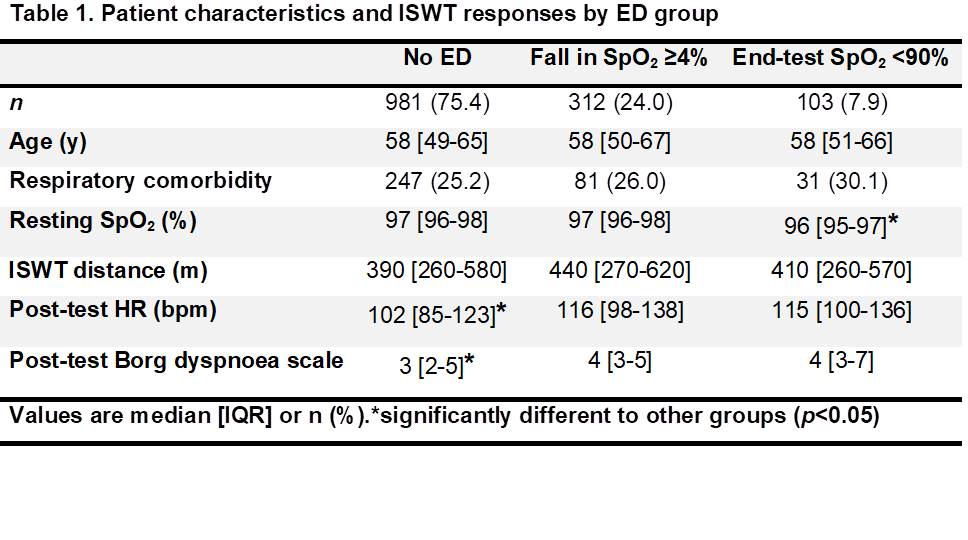Abstract
Introduction: Exertional desaturation (ED) is a safety concern for patients after a COVID-19 hospitalisation but the prevalence of ED remains unclear.
Aim: Determine the prevalence of ED during an incremental shuttle walk test (ISWT) in adults 5 months post-hospital discharge for COVID-19.
Methods: 1301 patients (BMI: 32.2±7.1 kg/m2; 38.2% female) in a multicentre long-term follow up study (PHOSP-COVID) performed an ISWT 5 months post-discharge. Fingertip peripheral oxygen saturation (SpO2) was recorded at rest and post-test. ED was defined as a pre- to post-test fall in SpO2 ?4% or an end-test SpO2 <90%.
Results: SpO2 reduced pre- to post-test by 1% [0-3%] (p=0.01). Eight (0.6%) tests were stopped due to a SpO2 ?80%. ED was observed in 315 (24.2%) patients (Table 1). ISWT distance and the number of adults with a pre-existing respiratory comorbidity was not different between ED groups (Table 1; p>0.05).
Conclusion: Almost 25% of adults experience ED after a COVID-19 hospitalisation. In this cohort, ED was not associated with reduced exercise tolerance or a pre-existing respiratory comorbidity. Future work is needed to explore the mechanisms of ED post-COVID-19.
